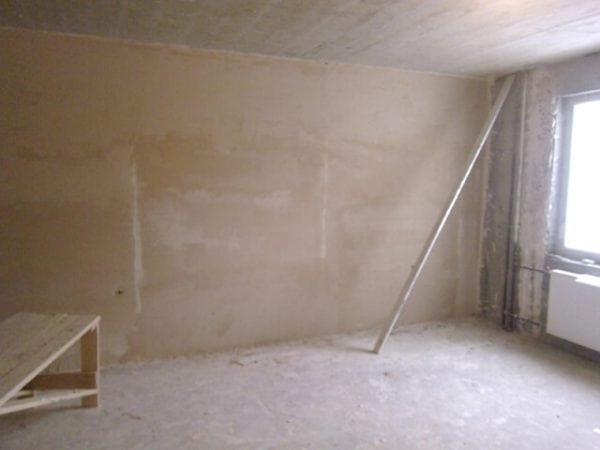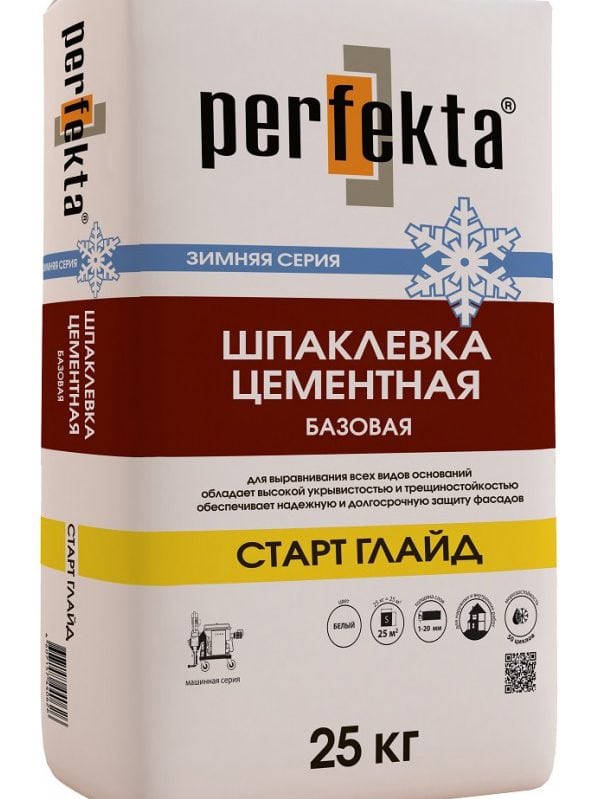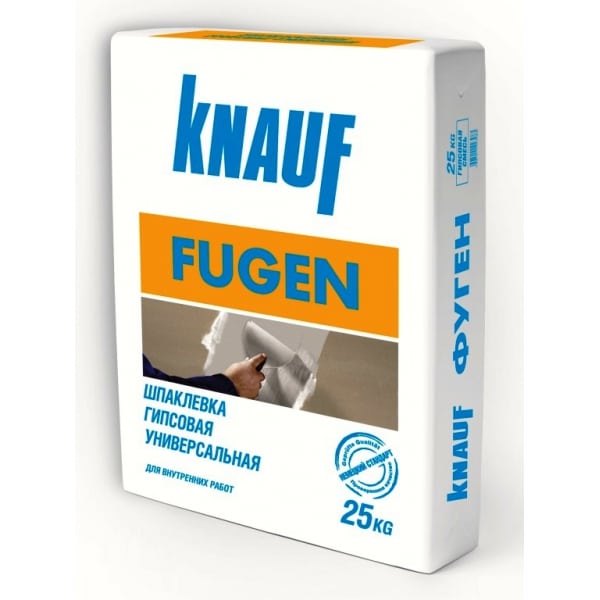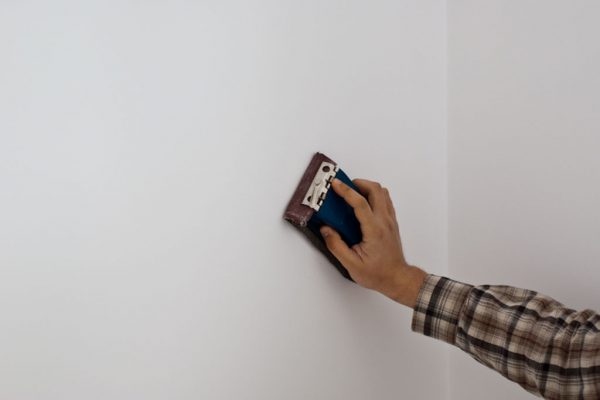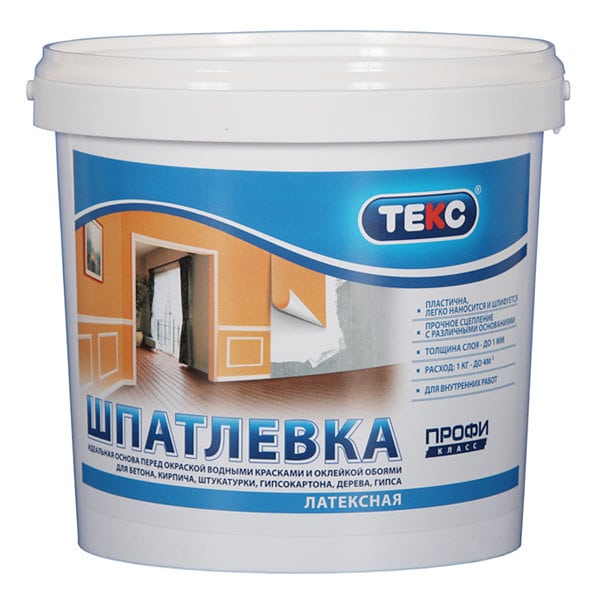How much does putty on the walls dry? This issue can become decisive when choosing such compositions for cosmetic repairs of the surface, as well as for finishing before applying the finish coating.
- Varieties of putty
- What affects the drying time
- Work rules
- Composition Properties
- Work technology
- Is it worth it to artificially speed up the drying
- Binder Drying Time
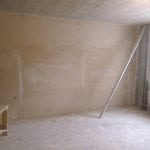
Varieties of putty
All of them are divided into types by binder: gypsum, cement, polymer, acrylic, epoxy. Another unit - in scope. For example, gypsum putties are usually recommended only for dry rooms. However, due to the additional additives included in them, compositions can be used both in moist places and in places that are not exposed to direct contact with water: universal putty compositions are suitable for any premises.
According to the granularity of the composition, rough and finishing putties are distinguished, and the latter can be used for both types of work. Mixtures for roughing have a larger grain than the finishing ones. They are applied in a thick layer, filling all the bumps. Finishing putties are put on top of the rough with a thin layer, carefully sanded, after which the surface is ready for final finishing - staining, applying Venetian plaster or wallpapering.
How long does putty dry? The answer to this question depends on many factors. Among them, the binder, on the basis of which the mixture is prepared, is of great importance.
to contents ↑What affects the drying time
Each composition dries differently. It depends on various factors:
- thickness of the working layer;
- temperature in the room where work is carried out;
- humidity level;
- the presence / absence of additives affecting the drying rate;
- base material and primer.
The greater the thickness of the working layer, the longer the putty dries. Finishing compositions on any binder dry quickly, because they are applied with a thickness of not more than 2 mm.
The higher the ambient temperature, the faster the putty dries, the lower the longer. It is not recommended to work at subzero temperatures. In frost, the putty polymerization process is disrupted. If it hardens, it will fall off pretty quickly anyway, and the work will have to be done again. The introduction of frost-resistant additives will help correct the situation.
The higher the humidity level, the worse the surface dries. This point must be taken into account if outdoor work is carried out.
Additional substances are introduced into all modern putties, providing plasticity, viscosity, adhesion, and drying speed. To find out if there is any of the above in the mixture you purchased, examine its composition as indicated on the label.
to contents ↑Substrate material and priming are directly related to the rate of putty drying. If you put in order ordinary and primed walls, the latter will dry less. The primer reduces the absorption of moisture by the surface. Accordingly, the drying time of the putty is reduced.
Work rules
For puttying walls, gypsum, cement, or polymer-based formulations (latex, epoxy, acrylic) are preferred. Knowing how long a particular composition dries, it is not difficult to choose the one that is ideal for specific conditions.In addition, it is necessary to take into account such features as shrinkage, the tendency to crack and others.
Composition Properties
Gypsum putty dries quickly, gives a perfectly smooth, pleasant to the touch surface (can be used as a finish), does not shrink. It is better to use in dry rooms, even if the manufacturer claims that its mixture is moisture resistant.
Cement putties are universal. They are suitable for both wet and dry rooms, however, they give strong shrinkage, are often coarse-grained, therefore they are mainly used as starting ones.
to contents ↑Polymer compositions are sold ready to use (with the exception of epoxy, they are two-component), they give the same perfectly smooth surface as gypsum, while they are moisture resistant, do not crumble, do not crack, differ in whiteness, are plastic, and are well sanded.
Work technology
The rules of work include the following recommendations:
- Prepare the surface - clean the old coating, dedust, degrease, expand the cracks.
- Wait for suitable conditions for puttying - the temperature in the room should not be below +5 and above + 25 ° C. Humidity is not more than 55 - 60%. If higher, the drying process will be delayed.
- Prime the surface, this will reduce its moisture absorption and prevent cracking of cementitious compounds.
- Use a starting putty to close up rough bumps in the walls (ceiling, floor). The thicker the composition is applied, the longer it will dry. Therefore, a good option would be to divide the work into several stages - thin layers of plaster will dry faster.
- After complete drying, sand the surface and bring it to perfect evenness, then apply a thin layer of finishing putty.
- To sand the finishing putty, use very fine sandpaper and do not overdo it, otherwise you will have to putty again.
Many are interested in the question of how much the finishing putty dries. It is applied in a very thin layer, so the drying time is not more than 1 hour under optimal operating conditions. Any quick-drying putty in 99% of cases is finishing.
to contents ↑Is it worth it to artificially speed up the drying
The vast majority of experts do not recommend this. When using various heating devices (hair dryers, heat guns, etc.), the surfaces of the walls dry unevenly, or rather only the surface layer dries. Therefore, to speed up work, for example, with finishing putty, the method of accelerating drying is quite acceptable. When working with starting mixtures applied in a thick layer, forced drying can cause cracking, desquamation of the upper layer, shedding or destruction of the entire restoration site.
Conditions that will naturally speed up the drying process:
- optimal air temperature;
- high-quality ventilation in the room;
- normal humidity.
To speed up at least a little repair, often use modern quick-drying putty. There are variants of such mixtures for surfaces made of concrete, metal, wood, as well as universal compositions, which, as a rule, lose in quality to both starting mixtures and finishing ones, while they cost significantly more than the first and second.
Excellent drying time for latex putties. They are quite expensive, but the price / quality ratio is optimal. Such compounds are elastic, adhere well to walls, one layer dries for about an hour at +20 - 25 ° C. Another advantage of this material is its readiness. Latex putty is available immediately ready for use and does not freeze for a long time.
to contents ↑Binder Drying Time
In order to coordinate repair work, it is necessary to know the speed of solidification of putty compounds:
- Gypsum mixtures are the fastest drying.Knauf starting formulations dry up to 7 days with a layer of up to 30 mm, quick-drying finish formulations dry from 4 to 6 hours. A 3 mm layer is ready for further processing in 1 day.
- Cement Starting dry mixes are set after 5 hours, and the drying time of the finish layer up to 3 mm thick is 1 hour.
- Polymer. Here, the drying time depends on the type of putty. For example, epoxy dries for 8 hours, latex for at least 12 hours. An acrylic starting layer of 1 mm is ready for further processing in just 3 hours, and a finishing layer of 3 mm dries up to 24 hours.
- Knauf universal quick-drying formulations dry after 30 minutes.
Knowing how much putty dries, it is possible to properly plan the work, which is very important if they are carried out outdoors and depend on atmospheric phenomena (heat, cold, precipitation).

